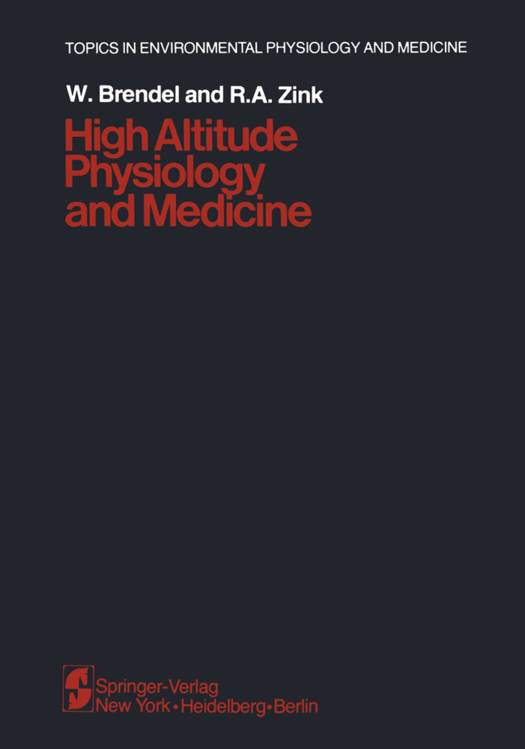
Door een staking bij bpost kan je online bestelling op dit moment iets langer onderweg zijn dan voorzien. Dringend iets nodig? Onze winkels ontvangen jou met open armen!
- Afhalen na 1 uur in een winkel met voorraad
- Gratis thuislevering in België vanaf € 30
- Ruim aanbod met 7 miljoen producten
Door een staking bij bpost kan je online bestelling op dit moment iets langer onderweg zijn dan voorzien. Dringend iets nodig? Onze winkels ontvangen jou met open armen!
- Afhalen na 1 uur in een winkel met voorraad
- Gratis thuislevering in België vanaf € 30
- Ruim aanbod met 7 miljoen producten
Zoeken
High Altitude Physiology and Medicine
€ 125,95
+ 251 punten
Omschrijving
High altitude physiology and medicine has again become important. The excep- tional achievements of mountaineers who have climbed nearly all peaks over 8,000 m without breathing equipment raise the question of maximal adaptation ca- pacity of man to low oxygen pressures. More importantly, the increase in tourism in the Andes and the Himalayas brings over 10,000 people to sites at altitudes above 4,000 and 5,000 m each year. At such heights several kinds of high alti- tude diseases are likely to occur, and these complications require detailed medical investigations. Medical authorities need to inform both mountaineers and tourists as to how great a physical burden can be taken in the mountain environment without risk to health. Physicians need to know what kind of prophylaxis is to be employed at high altitudes to prevent the development of diseases and what therapeutic measures should be used once high altitude diseases have occurred. Moreover, the physical condition of the indigenous population living at higher altitudes such as the Andes and the Himalayas, who are exposed continuously to the stress of high altitude, requires our attention. We have become familiar with symptoms characteristic of chronic high-altitude disease: under special conditions this popu- lation has a tendency to develop pulmonary hypertension, which is associated with pulmonary edema, pulmonary congestion, and right heart failure.
Specificaties
Betrokkenen
- Uitgeverij:
Inhoud
- Aantal bladzijden:
- 316
- Taal:
- Engels
- Reeks:
Eigenschappen
- Productcode (EAN):
- 9781461256410
- Verschijningsdatum:
- 3/10/2011
- Uitvoering:
- Paperback
- Formaat:
- Trade paperback (VS)
- Afmetingen:
- 178 mm x 254 mm
- Gewicht:
- 589 g

Alleen bij Standaard Boekhandel
+ 251 punten op je klantenkaart van Standaard Boekhandel
Beoordelingen
We publiceren alleen reviews die voldoen aan de voorwaarden voor reviews. Bekijk onze voorwaarden voor reviews.










